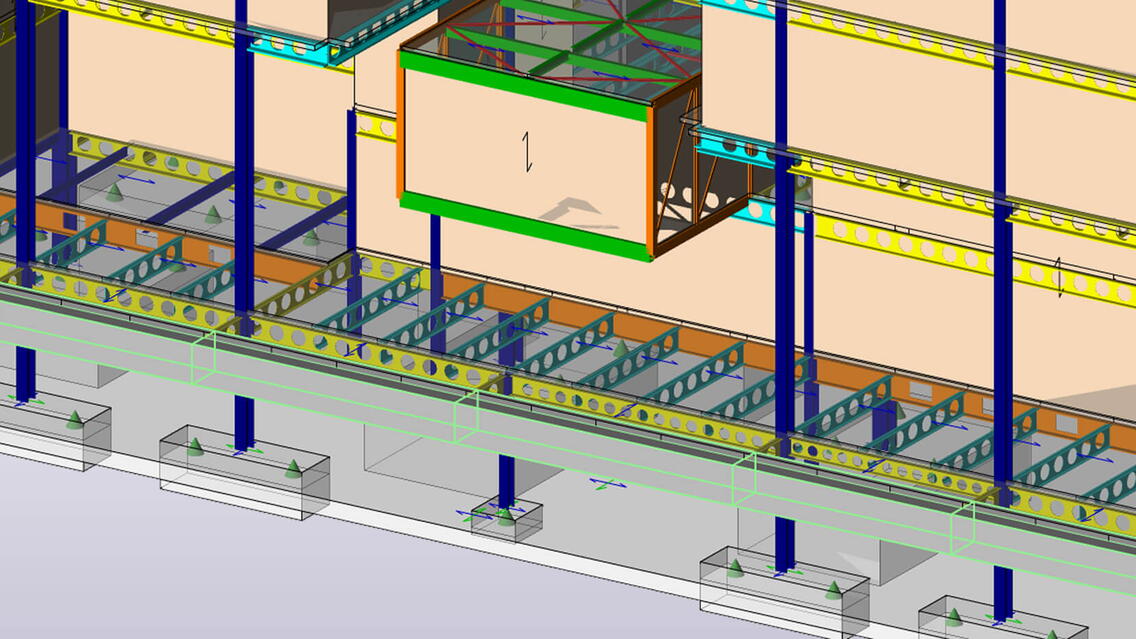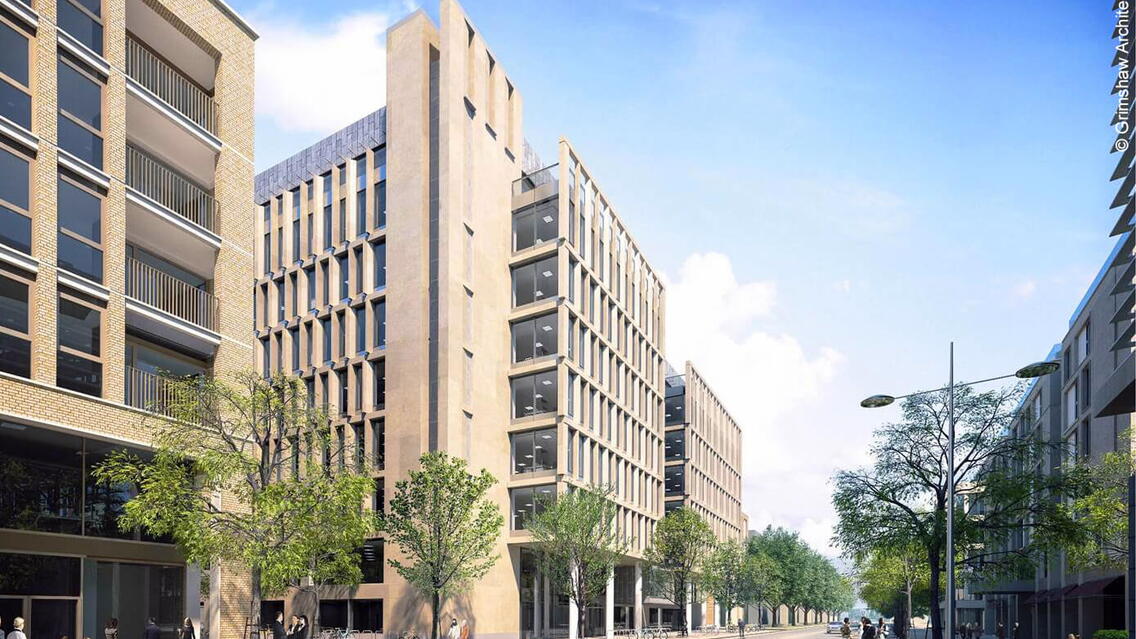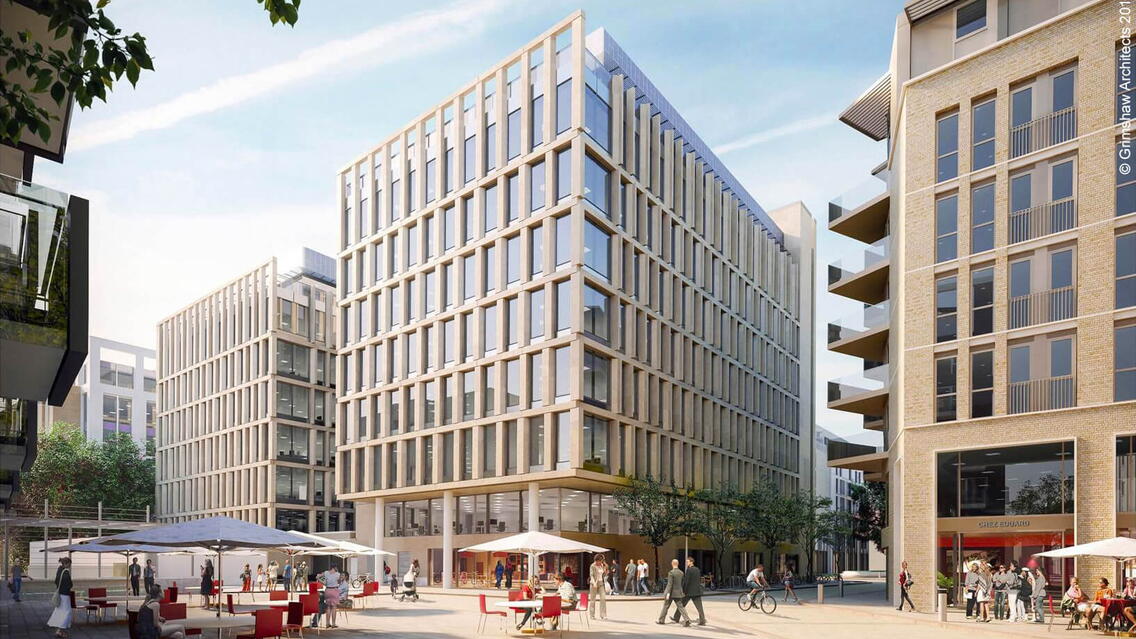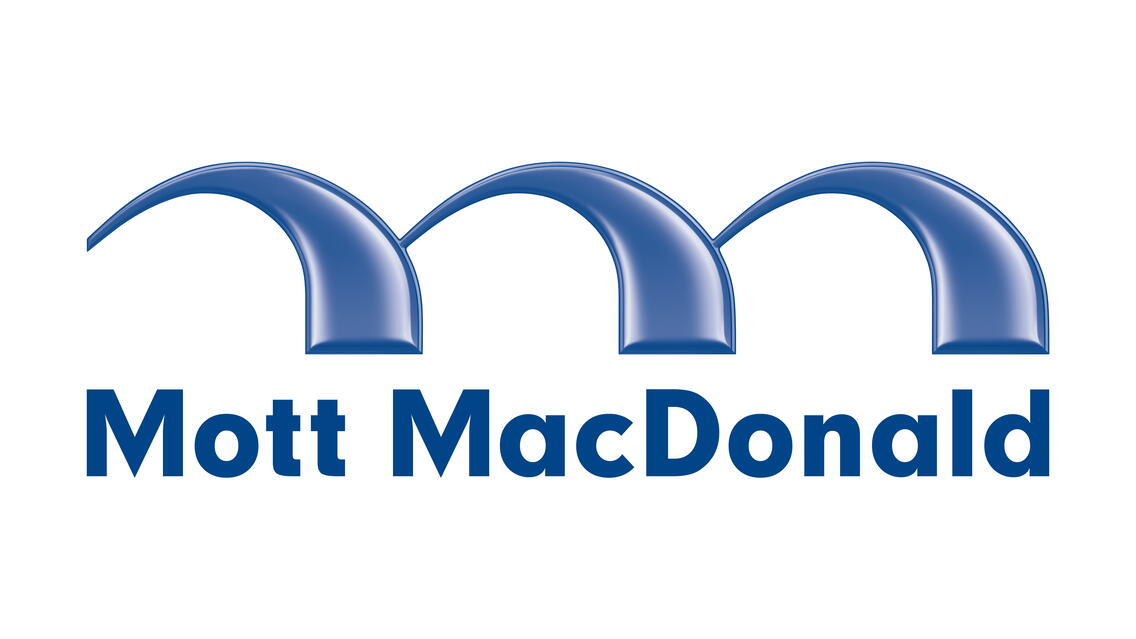Multi usage structure for Cambridge’s CB1 masterplan
50 & 60 Station Road is the fifth building in Cambridge’s CB1 masterplan - a new modern business district for Cambridge, delivering several multi-storey offices and a hotel.
The 50 & 60 Station Road project is a multi usage structure including a modern office space with restaurants and shops occupying the ground floor. Mott MacDonald has worked as part of a design team led by award winning international architects Grimshaw, construction is set to start summer 2016.
The preliminary design for 50 & 60 Station Road at RIBA Stage 2 was carried out using Fastrak Building Designer. Previous projects had used multiple design packages but on this project we saw an opportunity to use a single package in Tekla Structural Designer.
Originally designed as two separate buildings, the design developed merging the two buildings to form one structure. It will now be an eight and nine-storey steel framed building with a single storey basement - increasing construction efficiency and delivering a greater floor plate.
The steel frame comprises composite Westok cellular beams used along with a composite metal deck floor; this allows spans of 13m with circular cells and elongated holes for services to pass through. The lateral stability of the structure is provided through two concrete core structures, into which the steel frame connects. These cores provide the lift lobbies and stairwells for the building. The structure is supported on piled foundations with steel sheet piles creating the perimeter of the basement.
The Tekla model was created by exporting from the project’s Revit structures 3D model. The model includes the analysis and design of all the primary steelwork, the concrete cores, pile caps and basement slab using suitable spring supports for the piles. It also includes vertical permanent and variable loading, all wind lateral loads and uplift from ground water and heave.
Using Tekla Structural Designer for BIM methods
BIM was not a client deliverable on this project however Mott MacDonald implements BIM processes to drive efficient design. Some examples where this project used Tekla Structural Designer for BIM methods include:
- Creating accurate reinforcement rates for walls, columns, slabs and piles caps through TSD’s drawing function, reports and tabular data.
- Handing over of Tekla-outputted drawings to Revit technicians to ensure piles, beam web openings and other elements are detailed according to the structural model. This creates a strong link between the drawing and structural model.
- The initial design used TSD and Revit integration to coordinate the design in the early stages. The Revit model would then be shared with the architect to ensure accurate working across the design team.
As the project progresses into RIBA Stage 5 and beyond we plan to use the Tekla model for rebar drawings for slabs and pilecaps, reducing the sketching time required by an engineer.
A good example of applied BIM within the project is the design and inclusion of Westok plate beams in the structure. The seventh and eighth floors include transfer beams for an inset floor. The original design was for double beams to support the inset columns. Using TSD we replaced the double beams with Westok plate beams, which could be designed within the model. Using the drawing function, DWGs could be sent to the mechanical engineer to confirm web penetration requirements with their service route requirements. The section was then exported to Revit and the DWG could be used to ensure web penetrations were displayed accurately on drawings. Using this process savings were made on steel weight and the number of connections, while allowing a more integrated design.
Innovative use of Tekla software
Typically projects use several software packages to design elements of a structure, particularly where there are concrete and steel elements. On this project, TSD facilitated a more integral design, allowing more elements to be designed within one software package restricting data transfer at interfaces. This reduced the time spent on manually inputting data and reduced the likelihood of human error through manual input. Other key innovative uses include:
- Modelling of the basement and piles using slabs and supports. This allowed for the structural design of the pile caps and basement slab. The piles were modelled as individual springs and allowed the output of individual pile loadings both strength and geotechnical combinations. Pile loading generation using this process was automatic allowing easily outputted pile loadings with minimum user interaction. The benefits of this include the reduction in human error and the ease in regenerating pile loads when changes occurred to the structure.
- Key elements like the cantilever pod structure were modelled allowing for analysis of their interaction with the larger structure including deflections and push/pull effects. The pod structure is a boxed structure cantilevering from the building between the first and second floor.
- The two cores have different stiffness’s and modelling both in one package was beneficial, ensuring an accurate analytical model of their behaviour.
Tekla Structural Designer is now our default modelling package
As a new piece of software there has been a learning curve, but familiarity with Fastrak Building Designer has been helpful. Following our success with the project an active support forum within Mott MacDonald has grown and there has been an investment in formal training.
A key challenge within the structure was the design of the Westok Cellular beams. TSD doesn’t currently support the design of Westok cellular beams within the software but includes an integrator. The integration did provide some issues but methods were put into place allowing for a smooth transition of beams from TSD to Westok Cellbeam. Overall this allowed for a more accurate and efficient process than designing each beam in isolation.
One of the key benefits of having TSD model, and the large scope of the model, was that it allowed for changes to be captured efficiently and effectively. The structure has had some major changes over its life. When the model was first created the building had a double basement with concrete band beams, this was removed for cost purposes and with a complete TSD model we were able to change the structure efficiently, reducing the redesign time and capturing all the effects of changes. This is especially the case with avoiding time consuming data transfers to other packages.
The experience with Tekla Structural Designer has been a huge benefit for the project; it has allowed for a single graduate to model the entirety of this project. Using a single package has allowed closer collaboration with the architect and a faster response to change, as well as more accuracy and a significant reduced risk where data transfer would have been used.
This success has put Tekla Structural Designer as the default modelling package within this design office.
Tekla model images “© Mott MacDonald 2016” and 3D renders “© Grimshaw Architects 2016.



